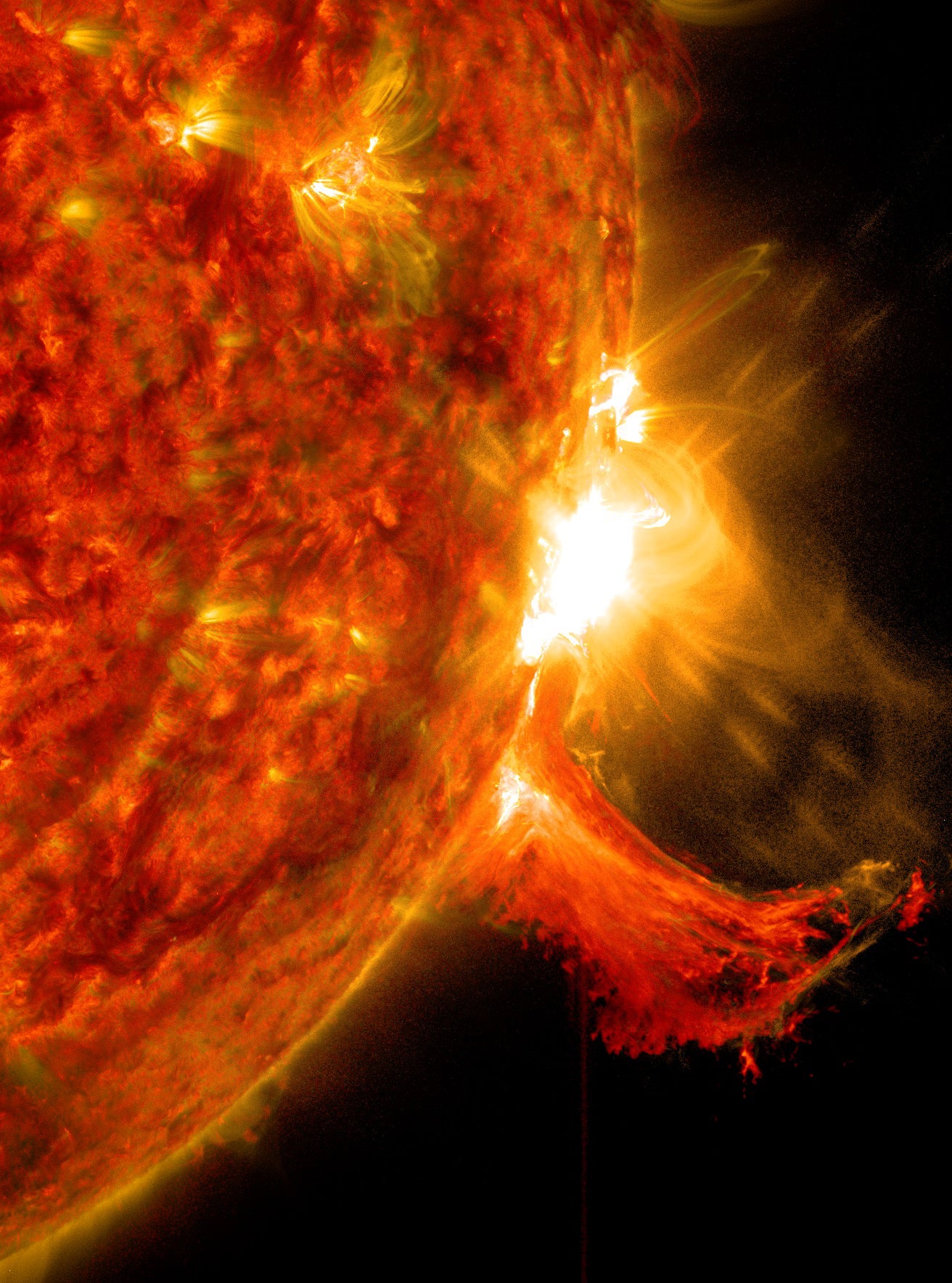Geomagnetic storm alert issued as Solar particles threaten to slam into Earth
US space weather watchers issued a moderate geomagnetic storm watch for Thursday as particles released from an 11 April solar eruption were predicted to slam into Earth

The US National Oceanic and Atmospheric Administration (NOAA) has issued a space weather alert for Thursday afternoon in advance of an expected geomagnetic storm that could impact electronics, satellites and communications.
NOAA’s space weather prediction centre issued the alert for a moderate geomagnetic storm just before 5pm GMT (12pm EST) for areas north of 55 degrees latitude, the parallel line running through Canada, the UK and Russia, including the cities of Thompson, Newcastle upon Tyne, and Omsk, respectively. The geomagnetic storm could cause voltage fluctuations in electronics, dampen radio frequency communications and pose a hazard to low altitude satellites by expanding the Earth’s atmosphere — on 3 February, a geomagnetic storm pulled 40 newly launched SpaceX satellites out of orbit.
The geomagnetic storm is the end result of a stream of charged particles and magnetic fields flung out from the Sun interacting with Earth’s own magnetic field. The source of the solar particles was an eruption on the Sun first noticed by solar astronomers on 11 April, and which triggered a coronal mass ejection, the stream of charged plasma that was accelerated toward Earth.
NOAA estimates the geomagnetic storm to be a G2 class, or moderate storm on a five point scale: G1 storms are minor, G3 storms strong, G4 storms are severe and G5 storms extreme.
The geomagnetic storm on 3 February that brought down the SpaceX satellites was a G1, and NOAA has also issued a G1 geomagnetic storm watch for Friday as the effects of the 11 April solar eruption and coronal mass ejection persist.
Solar eruptions, coronal mass ejections, and subsequent geomagnetic storms are likely to increase over the next few years as the Sun moves toward the peak of its 11-year solar activity cycle.
Space weather scientists have warned that the current solar cycle could have greater negative impact than previous cycles due to the many new satellites that have been launched in recent years, and which companies plan to launch before the peak of the current solar cycle. SpaceX alone plans to launch 40,000 satellites into orbit in the coming years.
Join our commenting forum
Join thought-provoking conversations, follow other Independent readers and see their replies
Comments